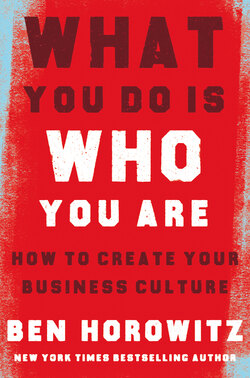Читать книгу What You Do Is Who You Are - Бен Хоровиц, Ben Horowitz - Страница 11
1 CULTURE AND REVOLUTION: THE STORY OF TOUSSAINT LOUVERTURE
ОглавлениеBlood of a slave, heart of a king.
—Nas
After I sold my company Opsware to Hewlett-Packard in 2007 and helped with the transition, I had nothing to do. As an entrepreneur, I had trained myself to think in contrarian ways. The secret to finding a breakthrough idea, as Peter Thiel says, is that you have to believe something that nobody else does. So I started thinking about ideas that everyone believes. The first that came to mind was “Slavery was so incredibly horrible that it’s almost unimaginable that it existed at such scale.” What was the contrarian point of view?
What if it were more shocking that slavery ever ended? As absurd as that sounded, once I dug into the matter, I felt like I might be onto something. Slavery had been around since the beginning of recorded history. It was endorsed by all the major religions; long and detailed sections of the Bible and the Koran are dedicated to it. In the 1600s, more than half of the world’s population was enslaved. How did it ever end? The stamping out of slavery is one of humanity’s great stories. And the best story within that story is the Haitian Revolution.
In our long history, there has been only one successful slave revolution that led to an independent state. There were surely uprisings by the slaves of the Han Dynasty and the Christian slaves of the Ottoman Empire, and there are numerous accounts of rebellions by some of the ten million Africans held in bondage during the slave trade that thrived from the fifteenth to the nineteenth centuries. But only one revolt succeeded. Certainly, strong motivation fueled every attempt—there is no more inspiring cause than freedom. So why only one victory?
Slavery chokes the development of culture by dehumanizing its subjects, and broken cultures don’t win wars. As a slave, none of your work accrues to you. You have no reason to care about doing things thoughtfully and systematically when you and your family members can be sold or killed at any moment. To keep you from learning about other ways of life, communicating with other slaves, or knowing what your masters are up to, you are forbidden to learn to read and have no ready tools for accumulating and storing knowledge. You can be raped, whipped, or dismembered at your captor’s pleasure. This constellation of atrocities leads to a culture with low levels of education and trust and a short-term focus on survival—none of which help in building a cohesive fighting force.
So how did one man, born a slave, reprogram slave culture? How did Toussaint Louverture build an army of slaves in Saint-Domingue (the prerevolutionary name of Haiti) into a fighting force so fearsome it defeated Spain, Britain, and France—the greatest military forces in Europe? How did this slave army inflict more casualties on Napoleon than he would suffer at Waterloo?
You might suspect that slavery was less brutal in Saint-Domingue than elsewhere. Did Louverture have a particularly easy go of it?
Nope. During the slave-trade era, fewer than 500,000 slaves were brought to the United States, while about 900,000 were introduced to Saint-Domingue. Yet by 1789, the United States contained nearly 700,000 slaves and Saint-Domingue just 465,000. In other words, the death rate on Saint-Domingue overwhelmed the birth rate. The island was a slaughterhouse.
Slaves in Saint-Domingue were treated with almost incomprehensible brutality. C. L. R. James describes it in his masterpiece, The Black Jacobins:
Whipping was interrupted in order to pass a piece of hot wood on the buttocks of the victim; salt, pepper, citron, cinders, aloes, and hot ashes were poured on the bleeding wounds. Mutilations were common, limbs, ears and sometimes the private parts, to deprive them of the pleasures which they could indulge in without expense. Their masters poured burning wax on their arms and hands and shoulders, emptied the boiling cane sugar over their heads, burned them alive, roasted them on slow fires, filled them with gunpowder and blew them up with a match; buried them up to the neck and smeared their heads with sugar that the flies might devour them.
This torturous environment led to a predictably abject and suspicious culture. Black slaves and mulattoes hated each other. The man of color who was nearly white despised the man of color who was half white, who in turn despised the man of color who was a quarter white, and so on.
What’s more, the military power poised to crush any rebellion was enormous. Saint-Domingue provided a third of the world’s sugar and half of its coffee; it was the most profitable colony in the world, and therefore of massive strategic interest. Every empire wanted to control it.
So no, this environment was not ideal for rebellion.
Louverture’s rebellion was no mere slave revolt, but a much more complex disruption premised on meticulous military strategy and aimed at lasting change. Considered a genius even by his enemies, Louverture was able to blend the best, most useful elements from slave culture and from the colonial European culture that had enslaved him—and to mix in his own brilliant cultural insights. The resulting hybrid culture inspired a ferocious army, a cunning diplomacy, and a farsighted perspective on economics and governance.
